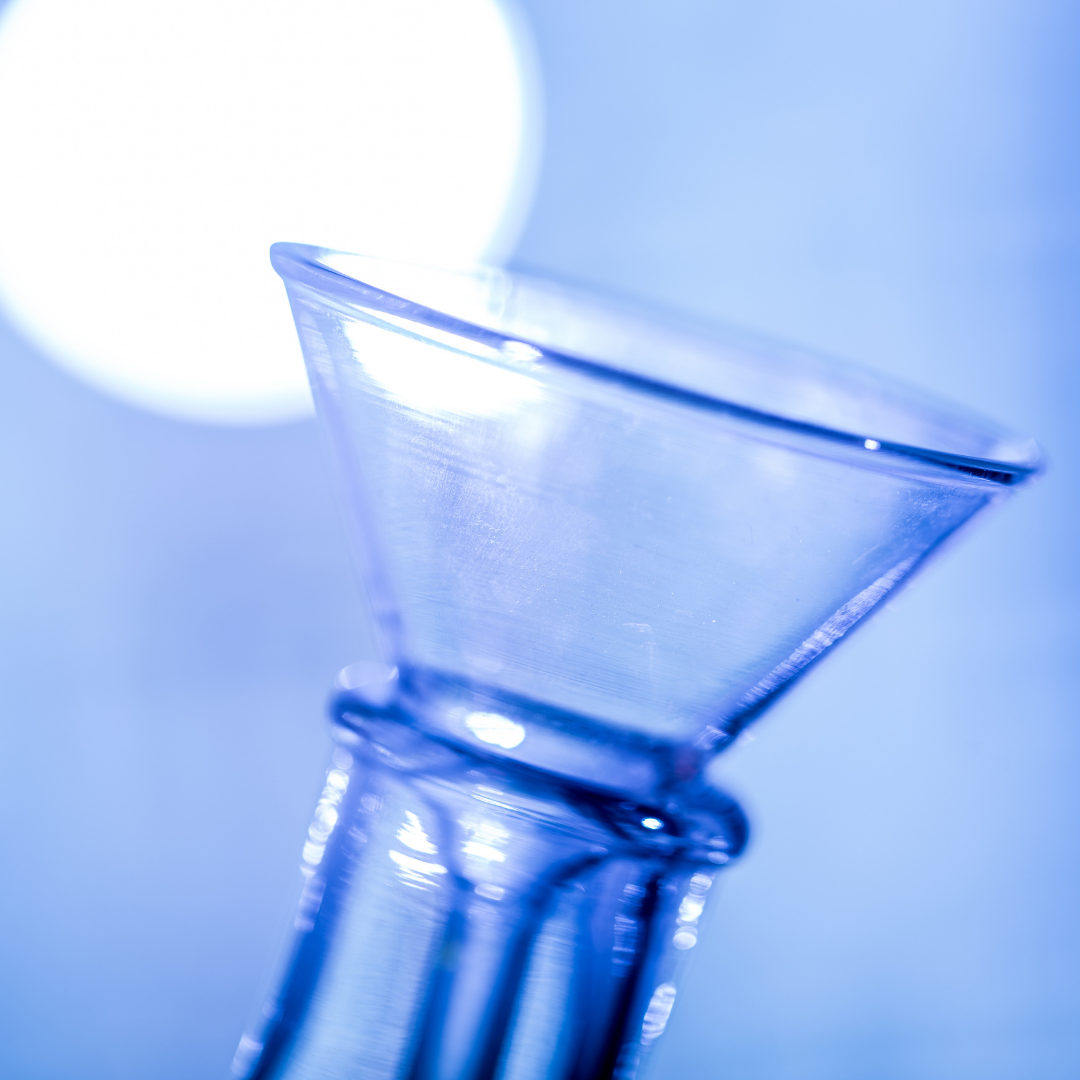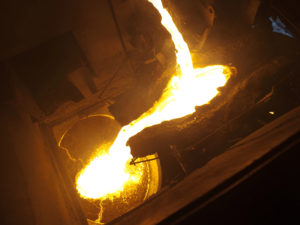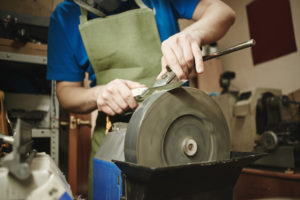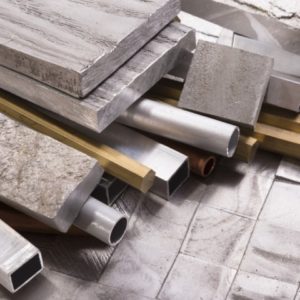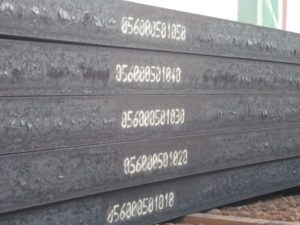Have you ever wondered why pyrex bakeware doesn’t explode?
According to The New York Times:
“You may have heard dramatic stories about Pyrex bakeware ‘exploding’ or shattering seemingly out of nowhere. These tales crop up regularly in Amazon reviews and news reports, such as this 2010 investigation by Consumer Reports. When tempered glass—which is what most glass Pyrex bakeware is made of—breaks unexpectedly, it can be pretty shocking and potentially dangerous (not to mention frustrating when it ruins your Thanksgiving pie). Still, we don’t think you need to worry. Here’s what you should know.
Types of glass and how they break
“Three basic types of glassware are typically found in most home kitchens: soda-lime, tempered, and borosilicate. And for each, you have three things to consider: Will it break easily if dropped? Will it break if heated or cooled? What does it look like when it breaks?
“Let’s start with the basic soda-lime glass. It’s the most common—used for everything from drinking glasses to pickle jars—because it’s versatile and inexpensive to produce. Untreated soda-lime glass is far more likely than the others to break from a tumble off your table. It’s also more susceptible to breaking from thermal shock (sudden or extreme changes in temperature, such as what happens when you pour a hot liquid into a cold glass). This shock causes different parts of the glass to expand at different rates and often crack from stress, making soda-lime glass a poor candidate for bakeware.
“Tempered glass is soda-lime glass that has been heat-treated for durability. During that heat-tempering process, the exterior of the glass is force-cooled so that it solidifies quickly, leaving the center to cool more slowly. As the inside cools, it pulls at the stiff, compressed outer layer, which puts the center of the glass in tension. ‘The atoms in there are stressed and they’re trying to pull themselves apart,’ explained Jane Cook, PhD, the former chief scientist at the Corning Museum of Glass. ‘But they can’t as long as they’re balanced by compression on the outside.’ That balance makes the glass more resistant to breaking if you drop it and more resistant to thermal shock, which is why it makes an excellent choice for tableware (our top-pick drinking glasses are tempered) and works well for bakeware.
“Tempered glass is often referred to as ‘safety glass’ because when it does break, it crumbles into relatively dull cube-shaped pieces rather than long, thin shards—this is why tempered glass is also used for passenger-car windows and shower doors.
“The third type of glass is borosilicate, which has at least 5% boric oxide added to its composition. It’s prized for its resistance to chemical corrosion and thermal shock, which makes it ideal for things like bakeware and laboratory equipment (most glass coffee carafes are borosilicate, too, as are our recommendations for the best pie plate and glass casserole dish). Although borosilicate glass is more resistant to thermal shock than tempered glass, under sufficiently extreme temperature changes it can still break (more on this below); it’s also more likely than tempered glass to break if you drop it. And borosilicate glass is more expensive to manufacture than tempered or soda-lime glass.
What causes tempered glass to shatter spontaneously
“Knowing that tempered glass is more resilient than other types, you may be wondering why there are all these reports of it ‘exploding.’ As Cook told us, it’s important to remember that ‘glass is inherently brittle and has a certain amount of unpredictability in it.’ Cook continued, ‘The tempering is an attempt to reduce [that] unpredictability, but it is not perfect.’
“What’s unique about tempered glass is that it has stored energy in the tensile zone, the area in the center of the glass that is held in tension and balanced by surface compression on the outside, as described above. So if something, such as a crack or flaw, disrupts the compressed outer layer and reaches the tensile zone, that throws off the balance, and the entire piece crumbles into tiny cube-shaped pieces (unlike untreated soda-lime glass, which breaks into shards).
“Sometimes the thing that breaks the tension in a piece of tempered glass isn’t as obvious as a drop on the floor, and as a result it seems as if the glass is breaking out of the blue. It’s undeniably alarming when this happens, but the glass experts we spoke to stressed that such an occurrence is rare—and again, the cube-like pieces that tempered glass breaks into are safer than shards of untreated soda-lime glass.
“Several contributing factors can cause tempered glass to shatter, but the most common culprits are surface damage, extreme thermal stress, and manufacturing flaws; often, it’s a combination of these things.
“Surface damage can result from any rough treatment of glass, such as repeatedly scratching it, dropping it, or banging it against another item in the dishwasher. This damage can weaken the glass without fully breaking it. (If you want to get really nerdy, scientists in fracture mechanics call this kind of damage subcritical crack growth.) ‘The glass may not break immediately, but … it can fail at a much later and essentially unpredictable time. It would be rare … but it could be delayed by months,’ explained William C. LaCourse, PhD, professor in the Glass Engineering department at Alfred University. In other words, if you drop a glass on the floor but it doesn’t break, keep in mind that the impact may have caused damage that’s undetectable to the naked eye, and the damage could contribute to spontaneous breakage in the future. It sounds counterintuitive, but LaCourse also said that although tempered glass is more durable than untreated soda-lime, it actually scratches more easily because the tempering process makes it less dense. Handling tempered wares (or any glassware) with care is of the utmost importance.
“Thermal stress is another factor that can cause glass to break spontaneously. As Cook told us, ‘Temperature itself isn’t what causes stress. It’s a difference in temperature from one part of the glass to another part of the glass. If one part is expanding or contracting more or less than the other, at the region in between [is] where the stress happens. It’s literally ripping itself apart. And if there happens to be a critical flaw in that region of higher stress between the hotter and the colder area, that’s where it’s going to break.’
“Manufacturing flaws are imperfections in the glass that develop when the piece is made. ‘As I see it, the real problem with tempered glass bakeware is its complex shape, which is very difficult to uniformly temper,’ LaCourse told us. ‘I assume they’ve done a lot of work to make sure that the cooling rates of the different parts of the pan cool about equally, but it’s pretty difficult to do that.’ Aside from improper tempering, various flaws can weaken the structure of the glass and make it more prone to breakage. These include:
- stones: small, unmelted sandy particles in the glass
- seeds: gas bubbles trapped in the glass
- blisters: gas bubbles that have broken through to the surface of the glass
- cord: striations or rivulets running through the glass (according to Cook, cord is less likely to contribute to stress, but it can if it’s severe)
“There’s one other factor we didn’t list earlier: stress relaxation, or the weakening of the temper in tempered glass, which can occur when the glass is subjected to high heat over an extended period of time. Some publications (such as ConsumerAffairs) have cited this weakening as one possible reason for spontaneous fracture. However, according to LaCourse, it would be unlikely for stress relaxation to occur under normal household use: ‘I don’t think the glass would ever see those [high] temperatures. To me, what we have to worry about are the flaws in the glass surface.’ As long as you follow the manufacturer’s instructions and avoid using tempered wares on the stovetop, under the broiler, in a toaster oven, or on a barbecue grill, stress relaxation is very unlikely to occur.
Why does Pyrex get such a bad rap?
“When it comes to bakeware, most reports of exploding cookware—such as this article by Gizmodo or various local news reports—are largely focused on Pyrex. This is partly because the brand is so popular in the US, but also partly because its bakeware used to be less prone to breaking from thermal shock.
“Pyrex pieces used to be made of borosilicate glass, which is more resistant to breakage when subjected to extreme shifts in temperature. But at some point in the past several decades (a representative we contacted at Corelle Brands, the manufacturer, wouldn’t reveal when exactly, but they confirmed that the company has been producing at least some tempered glass since the 1950s), Pyrex switched to tempered glass, most likely because boron, which is used to make borosilicate, is toxic and expensive to dispose of. Although tempered glass can better withstand thermal shock than regular soda-lime glass can, it’s not as resilient to such stress as borosilicate. And notably, when it does break, it does so suddenly and somewhat violently, shattering into many small pieces.
“But the percentage of glass cookware shattering unexpectedly is very small, according to Patty Davis, deputy director of communications and press secretary for the Consumer Product Safety Commission. ‘CPSC has investigated incidents with glass cookware,’ Davis told us. ‘When compared to the millions of glass cookware items that are in use in consumers’ homes, the number of incidents is small and the risk is low.’ At our request, Davis also conducted an internal National Electronic Injury Surveillance System database search for ER-related injuries caused specifically by glass cookware and bakeware shattering or exploding and found that between 2011 and May 2020 there were 950 reported incidents in total. That’s fewer than 10 a month across the entire United States.
“To be clear, the 950 reported injuries include glass bakeware from all manufacturers, not specifically Pyrex. According to Davis, the CPSC is unable to release information about specific companies without following a public disclosure process. However, the SaferProducts.gov website, the CPSC’s publicly available database of user-submitted reports of unsafe products, does allow you to search by brand. A search for “Pyrex” turned up 490 incidents from April 14, 2011, to May 19, 2020. But note that, unlike the reports in the NEISS database, many of these reported incidents don’t involve injury. Such incidents are self-reported by individuals, and the CPSC says it doesn’t guarantee the reports’ accuracy or completeness—really, they’re a lot like Amazon reviews, except that they also include a comment from the manufacturer.
“In many cases, the instances of exploding Pyrex reported to SaferProducts.gov and in various customer reviews online seem to be occurring as a result of people using the bakeware improperly (putting a dish under the broiler, for instance, or adding water to a hot pan). Oftentimes the reviewer isn’t even aware that they’ve used the bakeware inappropriately. This could be because they’re not familiar with Pyrex’s switch to tempered glass (which has a lower resistance to thermal stress), or because they’ve simply neglected to follow the manufacturer’s instructions.
“Since customer reviews can last forever online, the mounting complaints about exploding tempered glass can seem unsettling, even though the occurrence is quite rare according to the CPSC and multiple glass experts we spoke to. A representative of Corelle Brands (makers of Pyrex) told us that the company’s production capacity was confidential, so we don’t know the exact number of glass bakeware pieces made per year compared with the number of incidents reported to the CPSC. But when you consider the thousands of pieces made each day in a glass factory, the number of incidents reported is remarkably small. For context, I’ve toured the Corelle plant in Corning, New York (video), where a new piece of Corelle’s strengthened-glass dinnerware is made about every two seconds around the clock.
Why we’re not worried about using tempered glass
“Ultimately, judging from the small number of incidents reported to the CPSC, we don’t think there’s much cause for concern when you’re using tempered bakeware and tableware, especially if you follow our suggestions for reducing the risks. In most cases, we think the benefits of tempered glass—its durability and safer breakage patterns—outweigh the danger. I’ve been using tempered-glass pieces for baking and drinking for decades, as have several of my colleagues on the Wirecutter kitchen team, and among us we’ve experienced only one incident of unexpected, spontaneous breakage in all that time.
“Wirecutter senior staff writer Lesley Stockton said, ‘A tempered Duralex glass ‘shattered’ in my hands as I was rinsing it out one morning. Other than being completely surprised (and a little annoyed about having to clean tiny bits of glass out of my sink), I was unhurt, not even a scratch.’
“Lesley’s experience admittedly isn’t the worst-case scenario: Many of the news stories about Pyrex have centered on the danger of your dish suddenly shattering while you’re removing a piping-hot casserole from the oven, which in some instances has caused serious burns (though in many cases, breakage occurred as a result of the bakeware’s owner using it improperly). It’s true that tempered glass is more susceptible to thermal shock than borosilicate, but experts disagree on how much more susceptible it is—and we think some calculations may exaggerate the risk under normal use.
“For example, a calculation published by the American Ceramic Society found that borosilicate glass can withstand a sudden temperature change of up to about 330 degrees Fahrenheit, whereas tempered glass can withstand a temperature change of about 100 degrees. The publication references the tests performed by Consumer Reports, which used dry sand heated in casserole dishes. However, since sand gets much hotter than food, some experts say these tests (which are often cited in news stories about Pyrex) are too extreme and are not an accurate representation of durability under normal use.
“A more accurate test (and the one likely used by many glass manufacturers) might be the one included in the Cookware Manufacturers Association’s industry guide, the CMA Engineering Standards for Cookware and Bakeware manual. According to excerpts provided to us by Hugh Rushing, former executive vice president of the CMA, the CMA tests suggest that glass bakeware should be able to withstand being abraded with sandpaper (to simulate wear over time), heated in the oven for 20 minutes, and then submerged in a water bath with a temperature difference of 220 degrees Fahrenheit. This procedure was developed in conjunction with a committee of glass manufacturers and industry consultants, and it has been tested on a variety of glass samples from all the major glass producers, with the results submitted to an independent lab for analysis. And though adhering to these standards is voluntary, Rushing told us that a majority of cookware retailers and manufacturers subscribe to them.
“All that said, it’s also important to remember that flaws such as surface scratches, chips, or small cracks may lower the ability of any type of glass to withstand dramatic temperature changes. ‘The deeper the scratches, the less strong the glass will be,’ LaCourse told us. ‘There is no single number for the actual Delta T [or the temperature differential] that a particular glass can withstand because it depends on how it’s been handled and what the cracks or surface flaws are in the material.’ The various formulas, thicknesses, and shapes of the bakeware also affect the differential. But if you stay within the recommended temperature threshold indicated in the manufacturer’s instructions and treat your glassware with the proper care to limit nicks and scratches, we think the risk of spontaneous breakage is low.
Tips for using your glassware safely
“It sounds obvious, but you can help extend the life of your glass bakeware and tableware by treating it with care. You may be subjecting your tempered wares to extreme temperature changes and other abuses without even realizing it. If you’re unsure, always refer to the manufacturer’s use and care instructions. Here are some tips for minimizing the risk of tempered-glass items spontaneously breaking:
- Don’t buy glass items that have any glaring manufacturing flaws, such as chips or blisters, that might weaken the glass and contribute to breakage down the road. Always examine pieces carefully before purchasing. If the glassware chips during the course of normal use, you’re better off discarding it.
- Don’t stack hot tumblers or containers after removing them from the dishwasher. Always let them cool (preferably on a dry towel, not a cold counter) completely first. They’re more likely to stick when they’re hot, and you can cause superficial damage to them when you pull them apart.
- Don’t place a pie plate or casserole dish directly on a hot oven rack. Place it on a room-temperature baking sheet before putting it in the preheated oven to avoid ‘shocking’ the glass.
- Don’t preheat the bakeware in the oven. Always preheat the oven first before placing the bakeware inside it. According to Pyrex’s safety and usage instructions, ‘While the glass is designed for temperatures typically used in baking, it can break when exposed to the direct heat element while the oven is preheating.’
- Don’t place a hot pie plate or casserole dish straight from the oven onto a cool surface, such as a glass cooktop, a granite countertop, or in a sink. It’s best to put the dish on a dry dish towel or a metal cooling rack to cool. Damp towels or surfaces can also cause the hot glass to shatter.
- Don’t use tempered-glass bakeware on the stovetop, under the broiler, in a toaster oven, or on a grill.
- Don’t subject your glassware and bakeware to extreme thermal stresses, such as taking containers from the freezer and placing them directly into a hot oven and vice versa. Allow the bakeware to come to room temperature before placing it in the freezer, refrigerator, microwave, or preheated oven. Always stay within the recommended temperature threshold indicated in the manufacturer’s instructions.
- Don’t stack glass pie plates or heavy casserole dishes together without placing a cloth or paper towel in between them first.
“You may be wondering: Why use tempered-glass bakeware at all? For baking, glass conducts heat gently and evenly and offers the advantage of allowing you to see whether the bottom of your food is fully cooked and browned. Tempered-glass bakeware tends to be more affordable than ceramic or borosilicate, and we think Pyrex makes a number of simple, well-designed pieces, such as its classic pie plate or these oven-safe food storage containers.
“But if you’re especially nervous about the risk of unexpected breakage from thermal shock, you have other options. You can choose borosilicate bakeware like the OXO Good Grips Pie Plate (the main pick in our pie plate guide) and the OXO Good Grips Baking Dish (the budget pick in our casserole dish guide). You could also buy Pyrex borosilicate bakeware made in France (The European Pyrex is now a separate company not related to Corelle Brands.) Just keep in mind that even borosilicate glass can break from thermal shock, albeit into fewer, larger pieces.
“Some people also try to seek out older Pyrex pieces made of borosilicate before the company made the switch to tempered glass, but exactly when the change happened is hard to pinpoint. A representative at Corelle Brands told us, ‘Pyrex glassware [has] been manufactured from heat-strengthened soda lime glass since the 1950s.’ However, they did not disclose when Pyrex stopped using borosilicate altogether, and to our knowledge the company never made a formal announcement.
“If you’re willing to give up being able to see how the bottom of your food is cooking, you could also try ceramic bakeware (we have recommendations for ceramic casserole dishes and pie plates).
“Or, if you’d rather avoid any risk of breakage—whether from dropping or from thermal shock—the absolute safest choice is metal bakeware, as well as plastic or metal drinkware.”



